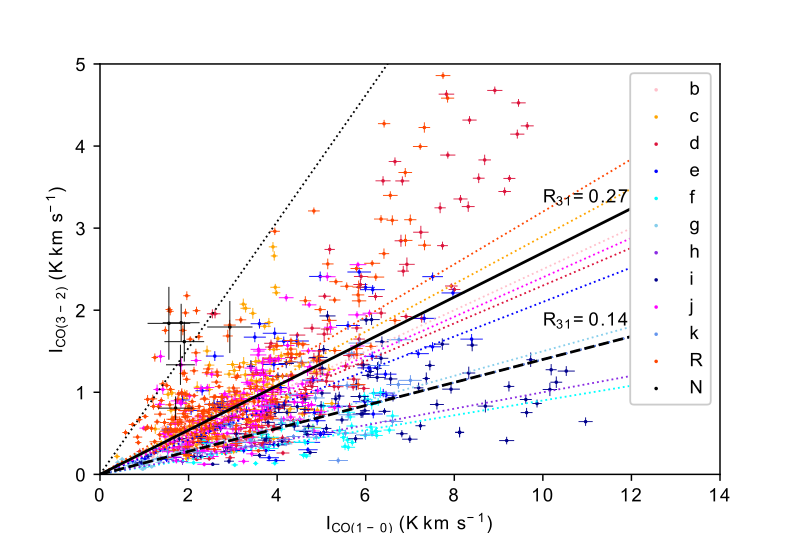
Data Release 1 is Now Avilable!

NASA ADS Page: Link Here
This paper presentz our HARP CO(J=3-2) observations, which cover 60 square arcminutes across 12 seperate fields. We invstigate how the CO(J=3-2)/CO(J=1-0) ratio and investigate to other properties in M31.
Left: Herschel/SPIRE 250 µm maps of the
raster field overlaid with CO(1–0) (white) and CO(3–2) integrated intensity contours. Right: The CO(3–2) velocity field map of the raster field, overlaid with CO(3–2) contours. The clumps identified by ClumpFind are labelled with numbers. Figure reproduced from Li et al. 2019.
In this paper we outline the properties of our data, how we reduce it and identify the CO line
in the cube. Our observations have a 1 GHz bandwidth with a resolution of 0.488 MHz,
equivalent to a verlocity resolution of 0.43 km s-1 for the CO(J=3-2)
line. We achieve a minimum sensitivity of 17 mK (Ta*) with a velocity
resolution of 2.6 km s-1.
To identify the emission we use the method described by Wilson et al. (2012) to obtain the moment maps by using the ClumpFind algorithm (Williams et al. 1994) on signal-to-noise maps to identify regions of the cube with significant line emission. This also allows us to disentangle components along the line-of-sight. An example of our raster field is shown in the figure on the right.

The CO(J=3-2) verses CO(J=1-0) line flux for every pixel in with identified line emission.
The pixels with a red-tint represent the fields in the 10 kpc ring while blue-tinted points are
from the other dields in the disc. This figure is reproduced from Li et al. 2019.
The CO(J=3-2)/CO(J=1-0) or R31 line ratio has been suggested as an indicator of gas temperature
and also of gas density, with typical values of 0.4-0.5 found in the Milky Way. In the fields in the 10 kpc
the R31 value is ~0.27 compared to the other HASHTAG fields in the inner disc where R31 is
~0.14 (in the nucleus the ratio is 0.77). These are shown in the left-hand figure.
Our R31 values show a moderate correlation with the measured dust temperature, with a Spearman's rank correlation coefficient of 0.55, suggesting the dust temperature can be a reasonable indication for the gas temperature. A slightly better correlation is found with the star-formation rate surface-density with a correlation coefficient of 0.69, although in fields where star-formation is far less dominant there is a much weaker dependence, suggesting that like dust the gas maybe heated by older stellar populations.